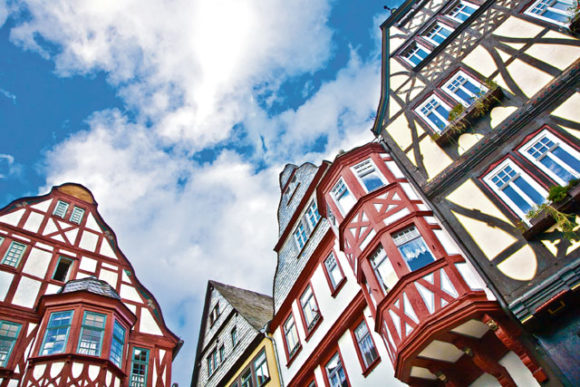Click here for part 1
Celle: Returning to the Timber-Frame Road, to the west of Quedlinburg and south of Stade, is the village of Celle. Celle has the largest collection of timber-framed houses in all of Europe (around 400). The town is located on the Aller River, and is known for being the “gateway to Lueneburg Heath,” a nature reserve. Celle Castle dates back to 1530 and belongs to one of the oldest dynasties still in existence. The palace is known to be one of the best examples of Renaissance art in Germany. During WWII, the town suffered some destruction but was spared when German soldiers surrendered. Since then, the town has seen tourism grow and has revived the tradition of having a trumpeter blow his horn from the white tower of the Stadtkirche, city church, twice a day. The tower dates back to 1308. Celle is located approximately 500 km north of Kaiserslautern. www.celle.travel
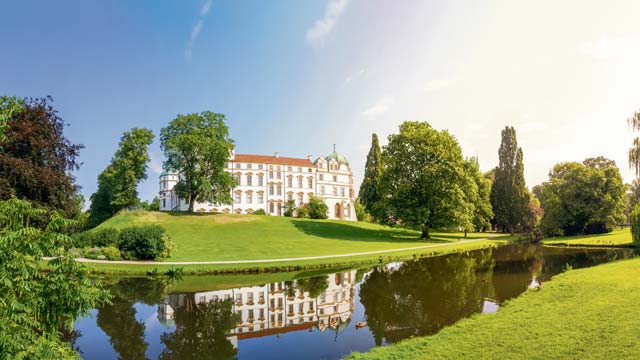 LaMiaFotografia / Shutterstock.com
LaMiaFotografia / Shutterstock.com Celle Castle
Einbeck: Along the Timber-Frame Road and located in the district of Northeim in the state of Lower Saxony, is the village of Einbeck. Einbeck remains a nearly intact example of a medieval village. It dates back to 1158, and between the 14th – 15th Centuries, was one of the largest cities in Northern Germany. In 1540, the town was completely devastated by fire to which the blame was swiftly put on a man by the name of Heinrich Diek. Diek was convicted of arson and placed inside a hanging iron cage to die. The village swiftly rebuilt after the fire and where possible, existing structures were reused. The rebuilt city from the mid-16th Century, is what we see today. Archeologists have since unearthed artifacts from the area that date back to the Paleolithic Era. The cage where Heinrich Diek hung can still be seen hanging on display in the town hall. Einbeck is located south of Hanover and approximately 120km west of Quedlinburg. It is about 400km north of Kaiserslautern. www.einbeck.de
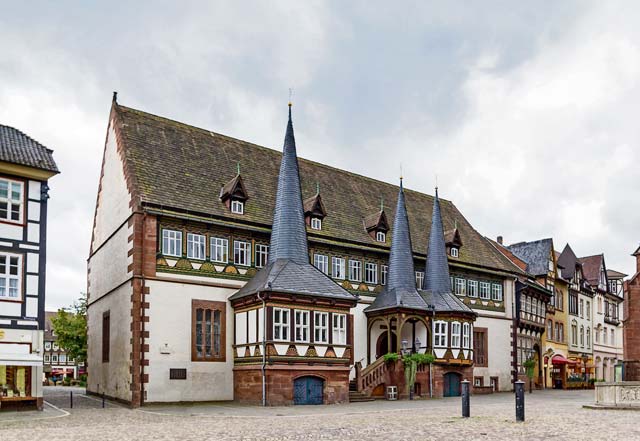 Borisb17 / Shutterstock.com
Borisb17 / Shutterstock.com medieval town hall, Einbeck
Wetzlar: Further south on the Fachwerkstrasse in the direction of Frankfurt in the state of Hesse, is the village of Wetzlar situated on the river Lahn. Wetzlar was once the Seat of the Imperial Supreme Court (Reichskammergericht) of the Holy Roman Empire. Roman remains from the reign of Emperor Agustus (27 BC – 14AD) have been unearthed there. The church steeple remained unfinished since the Middle Ages. During WWII the area surrounding Wetzlar and part of the church suffered damage. A decision was later made to rebuild the church to its original prewar state, unfinished steeple and all; today, the church steeple remains unfinished. The historic city center was luckily spared. The novel, The Sorrows of Young Werther by Johann Wolfgang von Goethe was inspired by Goethe’s time in Wetzlar. Wetzlar is located about 180km north of Kaiserslautern, near Giessen. www.wetzlar.de
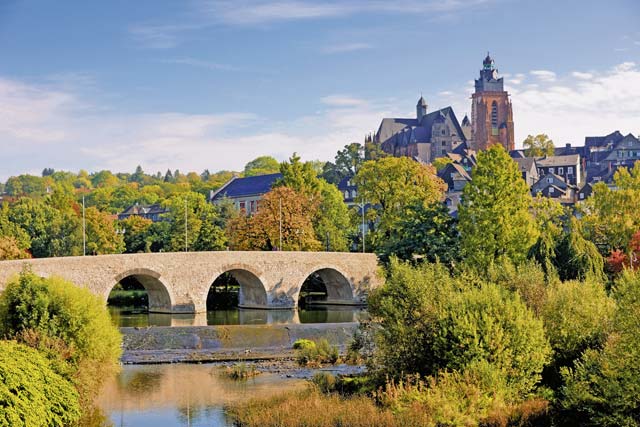 Bildagentur Zoonar GmbH / Shutterstock.com
Bildagentur Zoonar GmbH / Shutterstock.com Bridge and Dome, Wetzlar
Limburg a.d. Lahn: Remaining on the Fachwerkstrasse, west of Wetzlar, Limburg an der Lahn is also in the state of Hesse. Limburg a.d. Lahn is located about 63km north of Frankfurt situated on the river Lahn in a basin surrounded by mountain ranges. The city was of great importance during the middle ages. Its first mention was in the year 910. The town was strategically located on a Roman trade route. The Old Lahn Bridge (Alte Lahnbruecke) was originally built out of wood in 1248 but replaced with stone in 1306. In comparison to the traditional two-toned timber-framed homes of Germany, the colorful structures in Limburg a.d. Lahn stand out. For example, St. George’s Cathedral is accented in red. Many of the wood carvings on the facades have been painted in a variety of colors and some of the timbers have also been painted, providing a unique shift in perspective from the traditional medieval village. The town is known for its virtually unscathed medieval buildings; the original town wall still stands on the Deutsche Fachwerkstrasse. Among the sights to see in Limburg a.d. Lahn are the St. Anna Kirche which contains 18 stained-glass scenes from the New Testament dating back to the 14th Century and Brueckengasse 9, known for its wood carvings of the seven deadly sins. If you’ve ever wondered what Germany’s oldest half-timbered free-standing house looks like, that’s in Limburg a.d. Lahn as well at Roemer 2-4-6. This picturesque town is located 150km north of Kaiserslautern. www.limburg.de
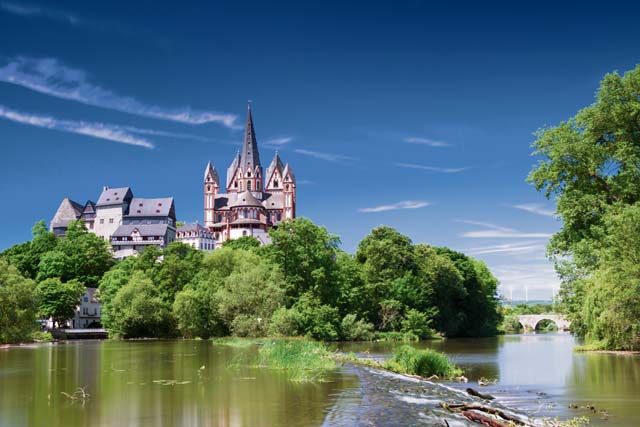 Circumnavigation / Shutterstock.com
Circumnavigation / Shutterstock.com Castle and Cathedra, Limburg an der Lahn
About the author: Ruth Cuevas is a freelance writer, Adjunct Professor and Yoga instructor who has lived in six countries in three continents since 2008. Her writing can be seen in ATOD Magazine www.atodmagazine.com and Elephant Journal www.elephantjournal.com. You can follow her travels on instagram at @mymotorcyclediaries. Her goal is to keep her blog updated www.mymotorcyclediaries.net.

